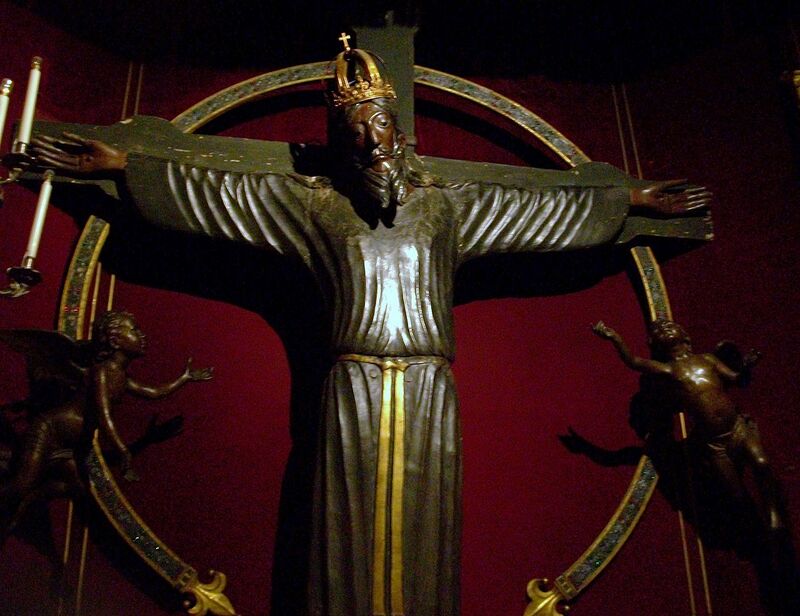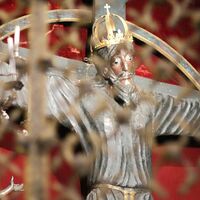Lucca's Volto Santo
Type:
Reliquaries,
Sculptures
Date:
Late eighth to first half of ninth century
Location or Findspot (Modern-Day Country):
Italy
Medium:
Wood
Dimensions:
2.5 m, head to toes
Description:
The so-called Volto Santo (Holy Face) is a large walnut-wood crucifix, so well known in the Middle Ages that Dante Alighieri mentioned it in his Inferno. Local legend says it miraculously sailed from the Holy Land to Italy, where an angel guided it to the cathedral at Lucca in the eighth century. Scholars have long thought it was a twelfth-century copy of an earlier original. In 2020, however, radiocarbon dating of the wood and the thin canvas layer between it and the pigments revealed that the crucifix was carved and painted in the last decades of the eighth century or first half of the ninth, making it the oldest wooden sculpture preserved in Europe. It is an early witness to the "rebirth" of figural sculpture after a centuries-long hiatus in which such images were avoided because of concerns about the potential for idolatry. The earliest medieval freestanding sculptures were also reliquaries, which made them more acceptable; the Volto Santo has a relics cavity between the figure's shoulders. Christ wears a long robe, associated with representations of the Crucifixion made in the eastern Mediterranean area and visible on an eighth-century icon from Mount Sinai, but in Lucca the garment has long sleeves. The figure has had a gold crown since at least the twelfth century (it is represented on a contemporary coin); the current crown dates to about 1665. The figure is clad in additional garments, shoes, and regalia on important feast days.
Relevant Textbook Chapter(s):
5
Image Credits:
Wikimedia Commons


